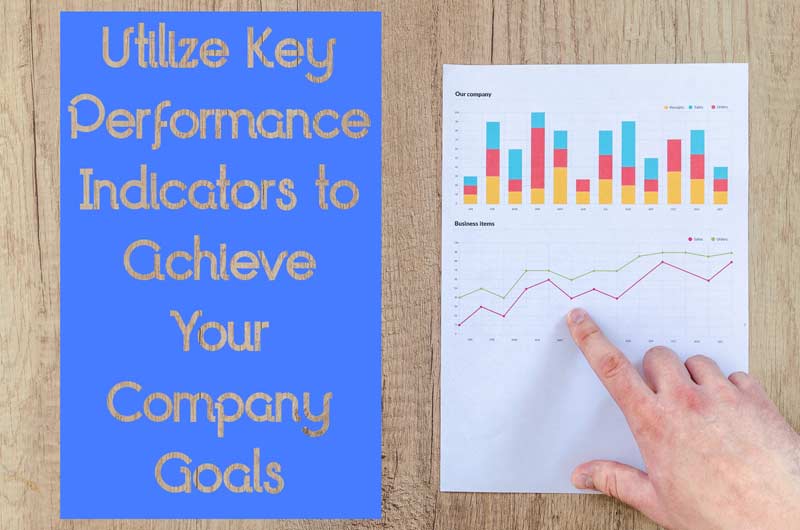Knowing how your business is performing now and in the past is crucial to determining where to head in the future. A lot of businesses just use their bottom line to gauge how their business is performing, but this doesn’t give as much insight as using key performance indicators (KPI). A KPI is a quantifiable metric that is directly tied to how your business is performing in relation to a goal. The KPI’s you choose are highly dependent on your company’s goals.
Business Goals
If you are running a business, then you probably understand that you need goals to have a clear vision of where you want your business to go. Your goals are going to be reliant on the industry and your specific business. An ecommerce business is going to have different objectives than a business in the service industry and even within industries businesses are at different levels of growth and have different challenges due to structure, geography, etc. The KPI’s that you choose should reflect your business, don’t use cookie cutter KPI’s. It’s important to be specific with your goals, being too vague makes the vison fuzzy. Instead of a goal like make more money, use quantifiable and time limited goals to see if you are reaching them. Something like increase sales by 10% in Q2, is a much more specific and intentional goal. If you have well thought out goals, then it will be much easier to determine which KPI’s will help you understand how you are.
It’s important to periodically review your goals and associated KPI’s. If there is one thing that never changes, it’s that things are constantly changing. If all goes according to plan, your business will grow and your objectives will change. Small businesses will have different aims than medium or large sized businesses. This means that KPI’s that served you well in the past may not be what you need now. Take the time to see if you need to adjust which metrics you are collecting.
Depending on the size of your business and how its structured, you may want to think about using different KPI’s for different levels of operation. For example, executives generally are looking at medium and long-range goals and may need to use different metrics to evaluate performance than a manager who is looking at short and medium-range goals.
Choose a Few Highly Specific KPI’s
Data is just information and not all of it is useful to determining performance in relation to our goals. In order to cut out the clutter and zoom in on the data that matters, we need to choose fewer KPI’s that get to the heart of how we are performing in relation to the desired outcome. What are the metrics that are key to achieving your goals? The fewer KPI’s we have, the more focused we can be. Not to mention having too many KPI’s can be overwhelming and expensive.
You will want to be as specific as possible when choosing KPI’s. You want the data to inform direct actions to be taken and the more vague a metric is, the more room for interpretation is left open. Being specific cuts out the guesswork as much as possible. Data informing action also means that you want to choose KPI’s that are actionable. Some metrics will inform actions that are outside what the company has control over, it’s probably better to spend your time and resources on things that are within your control.
Make sure your KPI’s are Measurable and Accurate
There are a few questions you will want to ask yourself in regards to which KPI’s you choose:
- What data needs to be collected?
- What technology or processes will need to be implemented in order to collect and access this data?
- What is the cost and potential ROI of collecting this data?
- Does the data collected represent all of the relevant information across channels?
- Are there any potential misrepresentations of the data?
- For example, if you are investing in SEO and don’t expect to see a return on your investment for months or even more than a year. SEO is probably still a good investment; however, it will skew your data to make it look like you’re not performing as well
Asking these questions will help you build the infrastructure necessary to collect data in a complete and efficient way. What this will look like depends on your specific goals and associated KPI’s.
Examples
There are lots of different KPI’s, here are a few examples so you can get a quick sense of what kind of measurements can be taken.
CPA/ CAC- Cost Per Acquisition or Cost Per Action/ Cost of Acquiring a Customer.
When you look into these KPI’s you’ll see that there are different definitions based on who you ask. Some consider these the same metric, while other consider CPA to be more broad and include non-paid actions as well, while still others consider CPA to only be non-paid actions much like Cost Per Lead (CPL) and a precursor to CAC, which would be lower down in the funnel. Any way you look at it, these are important metrics that are pretty widely used to determine whether your marketing is functioning as desired. When it comes down to it, it doesn’t really matter what you call the KPI, as long as you and your team have a precise understanding of what you are measuring and why.
LTV/ CLV – This is the estimated lifetime value of a customer.
This one depends on the type of industry you are in. Many businesses have a recurring nature to them, for example Car Insurance. This metric can give you insight into how much you can pay to acquire a new customer based on how much you expect to profit from recurring transactions. This can also apply to commerce, depending on the product. For example, if you sell coffee, people will consume your product on a regular basis, as opposed to if you sell refrigerators. People don’t buy fridges as much as they buy coffee, LTV might be a less important metric to measure for appliance companies. Churn/ Attrition Rate – This refers to the rate at which recurring customers are lost per unit of time.
This metric is directly tied into the LTV of customers and will give you insight into a number of ways you can improve your business. Customers cancel subscription-based services for a reason. Sometimes these reasons are out of the control of a business, so there is an inherent level of attrition to be expected. Many times, however, the customer cancels for something that the company does have control over. The cost of acquiring new customers is often challenging and expensive, so reducing the churn rate of your business is generally important.
Conversion rate – the number of conversions divided by the number of visitors
A conversion can be any action you decide is important. This could be a sale, phone call, registration, sign up, etc. Basically, this is a measure of how effective your offer is, the more people that convert as compared to the number of people who were exposed to the offer the more persuasive and effective your offer is.
Conclusion
There are lots of different KPI’s and determining which are right for your business is guided by your business goals. Do your research and pick the KPI’s that reflect the metrics that are truly crucial to your success. Remember to be specific, we are looking for measurable, actionable and accurate metrics that help us in realizing our attainable, quantifiable and verifiable business goals.
Direct Placement, LLC is a digital marketing agency that offers a variety of digital ads and services. Our trained and certified team of Account Managers and Internet Marketing Advertisers is dedicated to helping your business achieve its advertising goals. They will work diligently with you to help ensure our advertising efforts are tailored to your specific needs. Contact Direct Placement, LLC today or visit our website to discover how we can start transforming your business one click at a time! You can also follow us on Facebook, Twitter, or Blogger for more online marketing related content.
Direct Placement makes digital marketing easy. Your Marketing Pro is a Google Premier Partner and ready to boost your ad to the top of search results. Get started now.




